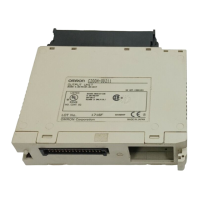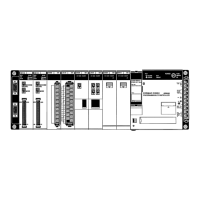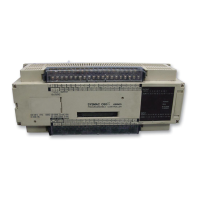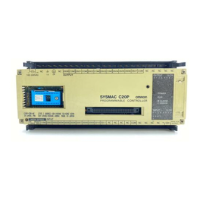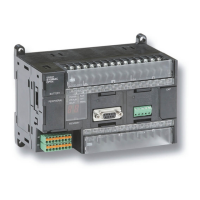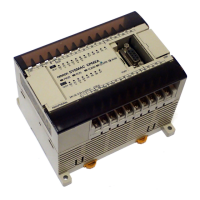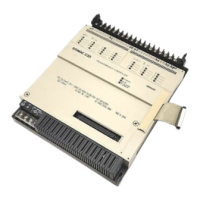29
Decimal Points Decimal points are used in timers only. The least significant digit represents
tenths of a second. All arithmetic instructions operate on integers only.
Signed and Unsigned Binary Data
This section explains signed and unsigned binary data formats. Many instruc-
tions can use either signed or unsigned data and a few (CPS(––), CPSL(––),
DBS(––), DBSL(––), MBS(––), and MBSL(––)) use signed data exclusively.
Unsigned binary Unsigned
binary is the standard format used in OMRON PCs. Data in this manu
-
al are unsigned unless otherwise stated. Unsigned binary values are always
positive
and range from 0 ($0000) to 65,535 ($FFFF). Eight-digit values range
from 0 ($0000 0000) to 4,294,967,295 ($FFFF FFFF).
Bit number
Contents 0000000000000000
15 14 13 12 11 10 09 08 07 06 05 04 03 02 01 00
Digit value 16
3
16
2
16
1
16
0
Signed Binary Signed binary data can have either a positive and negative value. The sign is
indicated
by the status of bit 15. If bit 15 is OFF
, the number is positive and if bit 15
is ON, the number is negative. Positive signed binary values range from 0
($0000) to 32,767 ($7FFF), and negative signed binary values range from
–32,768 ($8000) to –1 ($FFFF).
Bit number
Contents 0000000000000000
15 14 13 12 11 10 09 08 07 06 05 04 03 02 01 00
Digit value 16
3
16
2
16
1
16
0
Sign indicator
Eight-digit
positive values range from 0 ($0000 0000) to 2,147,483,647 ($7FFF
FFFF), and eight-digit negative values range from –2,147,483,648 ($8000
0000) to –1 ($FFFF FFFF).
Data Area Structure Section 3-2
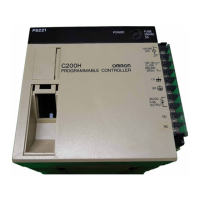
